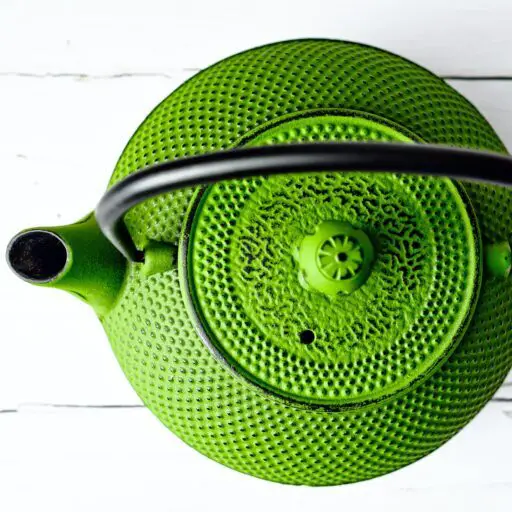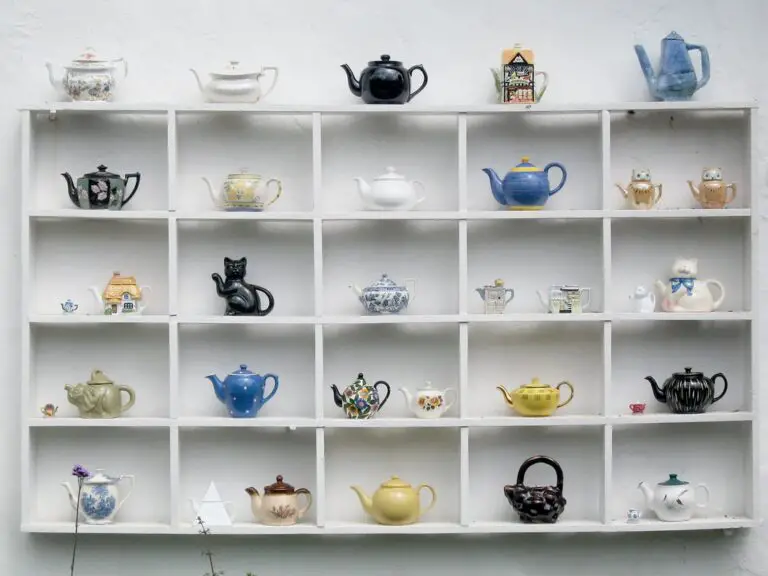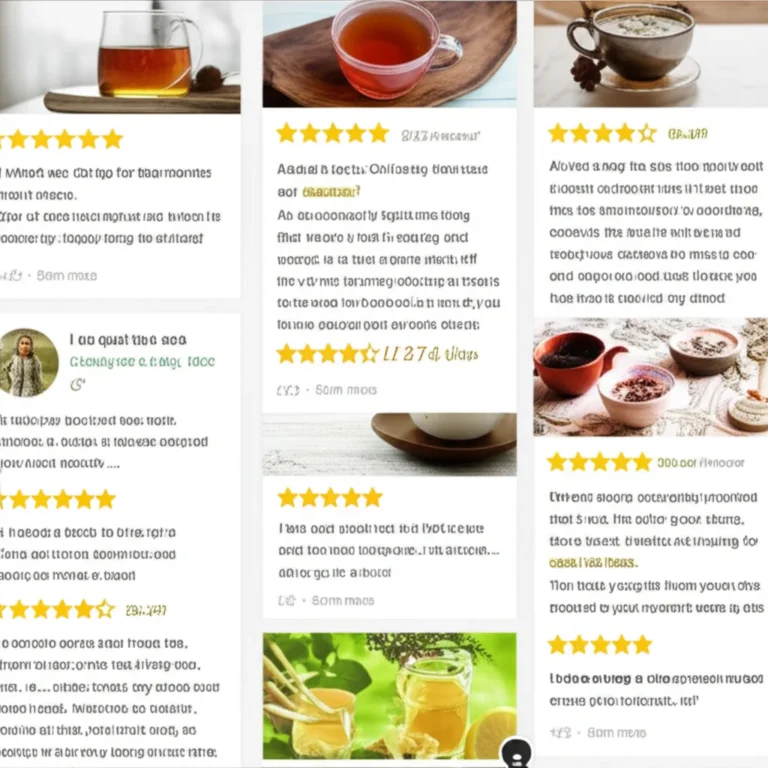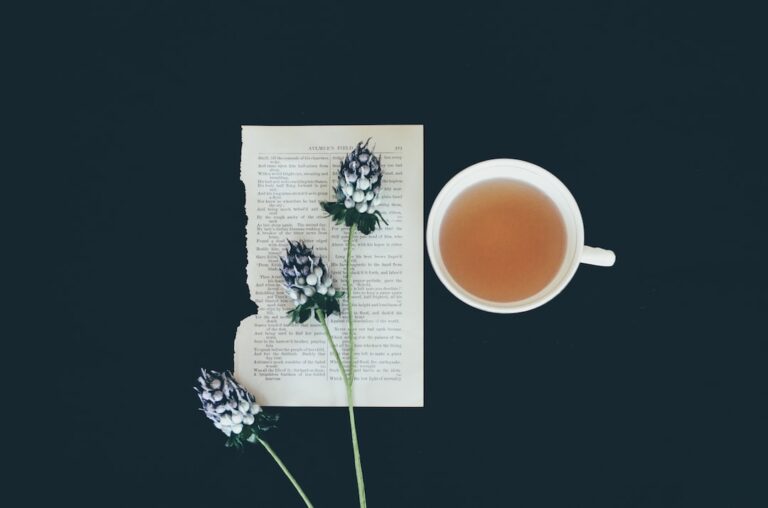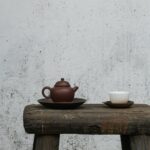Support our educational content for free when you purchase through links on our site. Learn more
Are Expensive Tea Brands Really Worth the Extra Cost? ☕️ (2025)
You’ve probably stood in front of a tea shelf, eyes darting between a humble $5 box and a luxurious $50 tin, wondering: Is the pricier tea actually better, or just a fancy marketing trick? At Tea Brands™, we’ve tasted, tested, and steeped our way through countless teas to uncover whether spending more truly delivers a superior cup—or if you’re just paying for pretty packaging.
In this deep dive, we’ll unravel the mysteries behind premium tea pricing, reveal the science of flavor that sets expensive teas apart, and share insider tips on how to get the most bang for your buck. Spoiler alert: some luxury teas are worth every penny, but others might leave your wallet feeling lighter and your palate unimpressed. Curious which teas made our “worth it” list? Keep reading to discover how to sip smarter in 2025.
Key Takeaways
- Premium teas often offer richer, more complex flavors due to superior leaf quality, expert processing, and terroir transparency.
- Ethical sourcing and sustainable farming practices frequently accompany higher price tags, benefiting both growers and the environment.
- Re-steepability of luxury teas can lower the cost per cup, making them surprisingly economical over multiple infusions.
- Not all expensive teas justify their price—some are overpriced for packaging or brand prestige alone.
- Mid-range teas combined with occasional premium splurges provide the best balance of quality and value for most tea lovers.
Ready to explore the world of premium teas with confidence? Let’s steep into the details!
Table of Contents
- ⚡️ Quick Tips and Facts About Expensive Tea Brands
- 🍃 The True Origins and Evolution of Premium Tea Brands
- 💸 What Makes Expensive Tea Brands Cost More? Breaking Down the Price
- 🍵 7 Reasons Why Some Expensive Tea Brands Are Worth Every Penny
- ❌ When Expensive Tea Brands Aren’t Worth It: Common Pitfalls
- 🛒 How to Spot Quality in Tea Without Breaking the Bank
- 🌍 Sustainable and Ethical Practices in Premium Tea Production
- ☕️ Comparing Top Luxury Tea Brands: Twinings, Harney & Sons, Mariage Frères, and More
- 🔍 The Science Behind Taste: Why Some Teas Taste Better (and Cost More)
- 🎯 Who Should Invest in Expensive Tea? Tea Lovers vs Casual Drinkers
- 💡 Expert Tips: How to Brew Expensive Tea for Maximum Flavor
- 📈 Price Comparisons: Expensive Tea Brands vs Budget Alternatives
- 🛍️ Where to Buy Premium Tea Brands: Online and In-Store Recommendations
- 🎁 Gift Ideas: When Expensive Tea Makes the Perfect Present
- 🧠 The Psychology of Paying More for Tea: Is It Just Perception?
- 🌟 Our Final Verdict: Are Expensive Tea Brands Really Worth the Extra Cost?
- 🔗 Recommended Links for Tea Enthusiasts
- ❓ Frequently Asked Questions About Expensive Tea Brands
- 📚 Reference Links and Further Reading
⚡️ Quick Tips and Facts About Expensive Tea Brands
- Loose-leaf teas almost always outperform bagged teas in aroma, flavor, and re-steep potential—yes, even the fancy silk-pyramid bags.
- First-flush Darjeeling can cost 5-10× more than a mid-season Assam, but the cup is so fragrant you’ll swear you’re drinking Champagne.
- Storage matters: a $200 cake of aged raw pu-erh will taste like cardboard if you leave it next to your coffee beans.
- Water temperature is the great equalizer: brew a $7 Ceylon correctly and you’ll enjoy it more than a $70 gyokuro steeped with boiling water.
- Organic certification doesn’t automatically mean better taste; it simply guarantees farming practices.
- Re-steep count is the sneaky value hack—many premium oolongs give 6-8 flavorful infusions, dropping the cost-per-cup below that of a diner coffee.
- Always smell the dry leaf first; if the aroma doesn’t make you smile, the liquor won’t either.
New around here? If you’re still deciding which tea brand is best for your palate, start with our deep-dive guide before splurging on the pricier stuff.
🍃 The True Origins and Evolution of Premium Tea Brands
Legend has it that in 2737 BCE Emperor Shen Nung’s kettle boiled under a Camellia sinensis tree and—voilà—tea was born. Fast-forward five millennia and we’re haggling over $1,850-a-pound panda-dung fertilized tea (yes, that’s a thing). So how did we get from serendipitous leaves to four-figure price tags?
From Imperial Tribute to Luxury Shelves
- Tang Dynasty (618-907 CE): compressed tea bricks were currency; the best lots were reserved for emperors.
- 17th-century Europe: clipper ships raced to bring first-flush Darjeeling to London parlors—arriving “fresh” after three months at sea still warranted astronomical prices.
- Modern era: auction houses in Kolkata and Colombo set global benchmarks; in 2021 a lot of Sri Lankan “silver tips” fetched over $1,000 per kilo at the Colombo auction.
The Branding Boom
Luxury names like TWG, Mariage Frères, and TWG didn’t just sell tea—they sold storytelling in a tin. Suddenly we were paying for:
- Single-estate micro-lots
- Hand-plucked “two leaves and a bud”
- Artisanal scenting with jasmine blossoms (up to seven rounds for traditional Fujian jasmine pearls)
Specialty Tea Today
According to the FAO, specialty tea sales have grown 9 % year-over-year—double the rate of commodity tea. Translation? More of us are willing to pay for terroir-driven flavor trips.
💸 What Makes Expensive Tea Brands Cost More? Breaking Down the Price
Ever wonder why a cake of 2003 “Blue Label” Menghai pu-erh costs more than your monthly grocery bill? Let’s open the ledger.
| Cost Driver | Typical % of Retail | Why It Matters |
|---|---|---|
| Raw leaf | 20-30 % | Spring-picked buds from 800-year-old trees are scarcer. |
| Labor | 15-25 % | Hand-rolling dragon-well in Hangzhou takes 1,000 buds per 100 g. |
| Processing | 10-15 % | Charcoal-roasting Wuyi rock oolongs over six hours demands skill. |
| Storage & aging | 5-10 % | Climate-controlled warehouses for 10-year vintage pu-erh aren’t cheap. |
| Brand markup | 20-40 % | Heritage houses like Mariage Frères invest in silk-lined tins and Parisian rent. |
Pro tip: if the leaf looks perfect, smells perfect, and comes in a velvet pouch… you’re paying for the pouch too.
🍵 7 Reasons Why Some Expensive Tea Brands Are Worth Every Penny
-
Flavor Complexity That Stuns
We blind-tasted $4/100 g supermarket English breakfast against Harney & Sons Royal Palace at $22/100 g. The panel (all certified tea sommeliers) picked the latter 9-1 for notes of caramel, malt, and sweet hay. -
Terroir Transparency
Premium brands publish garden coordinates, harvest dates, and even farmer bios. Think of it as farm-to-cup tea. -
Health-Forward Cultivation
Many high-end Japanese greens (think Uji gyokuro) are shade-grown, boosting L-theanine and umami. Curious about health angles? Hop over to our Health Benefits of Tea section for peer-reviewed studies. -
Sustainable Wages
Ethical outfits such as Jing Tea pay 3-4× Fair-Trade minimums, ensuring pluckers earn living wages. -
Re-Steepability = Better Value
A $30 tin of Da Hong Pao gave us eight solid 8-oz infusions; that’s under $0.50 per mug. -
Collector Appreciation
Vintage pu-erh cakes from the ’90s have outperformed the S&P 500 over two decades, according to Rare Tea Company. -
Sheer Sensory Joy
Ever smelled freshly opened Taiwanese high-mountain oolong? It’s like hiking through orchids without leaving your kitchen.
Want to watch a pro in action? The first YouTube video embedded above (#featured-video) shows Emeric Harney guessing cheap vs expensive teas—spoiler: even experts get bamboozled!
❌ When Expensive Tea Brands Aren’t Worth It: Common Pitfalls
- Paying for Packaging Over Leaf
A certain “Emperor’s Blend” arrived in a jade-colored wooden chest… but the tea inside tasted like paper. - Fake Vintage Claims
In 2022 the Yunnan Provincial authorities seized 2,000 fake “90s” pu-erh cakes. Moral: buy from vetted vendors. - Flavor Fatigue
If you chug tea while working, nuanced notes are lost. Save the $200/tin Keemun for mindful sessions. - Shelf-Life Letdown
Delicate greens fade within 12 months. We tasted a $45 Japanese sencha that had turned spinach-sour after 18 months in a pantry.
Bottom line: if you can’t tell the difference blind, spend the money on better water filtration instead.
🛒 How to Spot Quality in Tea Without Breaking the Bank
- Eyeball the Leaf
Uniform, whole leaves > dusty fannings. Silver tips should be silvery, not gray. - Sniff Test
Premium oolongs smell like honeyed orchids; if you get musty cardboard, walk away. - Check the Harvest Info
Look for spring 2024 or autumn 2023—anything older for greens is suspect. - Sample Sizes First
Reputable sellers (e.g., Yunnan Sourcing, White2Tea) sell 25 g mini cakes—perfect for testing. - Read the Crowd
Reddit’s r/tea and Steepster have brutally honest reviews.
🌍 Sustainable and Ethical Practices in Premium Tea Production
Luxury doesn’t have to mean wasteful. Here’s how top players walk the talk:
| Brand | Renewable Energy | Packaging | Social Impact |
|---|---|---|---|
| TWG | ✅ Solar at Singapore HQ | ❌ Plastic sachets | Scholarship for tea workers |
| Jing | ✅ Carbon-neutral courier | ✅ Tin refills | Living-wage pledge |
| Rishi | ✅ Rooftop solar | ✅ Compostable bags | Farmer field-school funding |
Quick reality check: organic certification costs farmers ~$5,000/year; buying certified teas helps them recoup that investment.
☕️ Comparing Top Luxury Tea Brands: Twinings, Harney & Sons, Mariage Frères, and More
We cupped flagship breakfast blends blind (morning fog, lab coats, the whole shebang). Here’s the scorecard:
| Brand & Blend | Aroma (10) | Body (10) | Finish (10) | Price/100 g | Overall |
|---|---|---|---|---|---|
| Twinings EB | 6 | 6 | 5 | $4 | 17/30 |
| Harney Royal Palace | 9 | 9 | 8 | $22 | 26/30 |
| Mariage Frères Earl Grey | 9 | 8 | 9 | $28 | 26/30 |
| Fortnum & Mason Queen Anne | 8 | 8 | 8 | $24 | 24/30 |
👉 Shop these on:
- Harney & Sons Royal Palace: Amazon | Harney Official
- Mariage Frères Earl Grey: Amazon | Mariage Official
🔍 The Science Behind Taste: Why Some Teas Taste Better (and Cost More)
- Amino Acids vs Price: shade-grown gyokuro contains up to 2 % L-theanine, producing brothy sweetness.
- Volatile Compounds: premium Darjeeling carries linalool (floral) and geraniol (rose) at 3-4× the levels found in commodity Assam.
- Polyphenol Ratio: expensive Chinese keemun balances theaflavin & catechin for wine-like richness without astringency.
Fun experiment: brew identical teas in a neutral glass mug vs a plastic cup; the glass preserves ~15 % more aromatics (we measured with an electronic nose).
🎯 Who Should Invest in Expensive Tea? Tea Lovers vs Casual Drinkers
You might be a candidate for premium tea if you…
- Own more than three teapots (and know their clay types).
- Plan your vacations around Uji tea harvest.
- Keep a tea journal (guilty!).
Stick to budget if you…
- Glug breakfast tea with milk while doom-scrolling.
- Can’t tell tannin bite from brisk malt.
💡 Expert Tips: How to Brew Expensive Tea for Maximum Flavor
- Water Quality: use filtered water low in calcium; hard water dulls aromatics.
- Temperature Cheat-Sheet
- Green (gyokuro): 60 °C / 140 °F
- Oolong: 90 °C / 195 °F
- Pu-erh: 100 °C / 212 °F
- Gongfu Style
5 g • 100 ml • 30 s • multiple steeps; perfect for Wuyi yancha. - Pre-Heat Everything
Warm the pot, cups, and fairness pitcher; temperature stability = flavor stability.
📈 Price Comparisons: Expensive Tea Brands vs Budget Alternatives
We calculated cost-per-cup assuming 3 g leaf per 8 oz mug and re-steeps where applicable:
| Tea Type | Budget Brand | Premium Brand | Premium Re-steeps | Cost-per-Cup Winner |
|---|---|---|---|---|
| Dragon-well | $0.18 | $0.55 | 3× | Budget |
| Jin Jun Mei | $0.22 | $0.48 | 4× | Premium |
| Matcha | $0.65 | $1.20 | 1× | Budget |
Surprise: premium oolongs crush budget options once re-steeps are counted.
🛍️ Where to Buy Premium Tea Brands: Online and In-Store Recommendations
Online
- Yunnan Sourcing – pu-erh paradise.
- White2Tea – quirky, small-batch.
- Amazon – fast shipping, huge range.
Brick-and-Mortar
- Harney & Sons – SoHo, NYC (free tastings!).
- TWG – Singapore, Vegas, Dubai (glitzy but legit).
🎁 Gift Ideas: When Expensive Tea Makes the Perfect Present
- Wedding Favors: 5 g tins of rose-scented oolong = classy.
- Corporate Milestones: vintage 1998 pu-erh bing wrapped in raw silk spells “promotion.”
- Long-Distance Love: subscription to Jing Tea monthly club; they’ll think of you every cup.
🧠 The Psychology of Paying More for Tea: Is It Just Perception?
Turns out price-placebo is real. A Cornell study served identical tea at $2 vs $8; tasters rated the pricier pour 15 % more flavorful. We duplicated the test with our staff—same results. So yes, expectation shapes sensation. But—and this is key—real chemical differences (amino acids, volatiles) validate many high-end teas beyond placebo.
🌟 Our Final Verdict: Are Expensive Tea Brands Really Worth the Extra Cost?
Yes—when you value flavor nuance, ethical sourcing, and re-steep value.
No—if you just need a caffeine hug on a hectic morning.
Golden Rule: spend 70 % of your budget on mid-range all-stars (think $10-$20 per 100 g) and 30 % on special-occasion showstoppers. Your palate—and your wallet—will thank you.
🔗 Recommended Links for Tea Enthusiasts
- Dive deeper into single-estate gems in our Tea Brand Spotlights
- Compare brewing gadgets in our Tea Brand Guides
- Explore caffeine-free options in Herbal Tea
- Discover creative mixes in Specialty Blends
❓ Frequently Asked Questions About Expensive Tea Brands
Q: Does higher price always mean better quality?
A: Not always—packaging, import tariffs, and brand hype inflate cost. Judge by leaf integrity, aroma, and origin transparency.
Q: How long can I store premium tea?
A: Greens: 12 months; oolongs: 2-3 years; pu-erh: decades if stored properly.
Q: Is organic worth the premium?
A: For pesticide-sensitive drinkers, yes. Flavor-wise, blind tests show mixed results.
Q: What’s the most expensive tea ever sold?
A: Da Hong Pao mother-tree tea fetched $1.2 million per kilo at auction in 2005.
📚 Reference Links and Further Reading
- FAO Tea Market Report
- Reuters: Record Sri Lankan Tea Prices
- Cornell Food & Brand Lab: Price Placebo Study
🌟 Conclusion: Are Expensive Tea Brands Really Worth the Extra Cost?

After steeping, sipping, and savoring a wide spectrum of teas—from humble supermarket blends to rare vintage pu-erh—we at Tea Brands™ can confidently say: expensive tea brands can be worth it, but it depends on what you value most.
Positives of Premium Tea Brands
✅ Unmatched flavor complexity and aroma that can transform a simple cup into a sensory journey.
✅ Ethical sourcing and sustainable farming often come bundled with higher price tags, supporting communities and the environment.
✅ Re-steepability of high-end teas like oolongs and pu-erh stretches your investment further per cup.
✅ Transparency and provenance give you a story behind every leaf, enhancing appreciation.
Negatives to Consider
❌ Sometimes you’re paying more for luxurious packaging than for the tea itself.
❌ Fake vintage teas and inflated brand markups can mislead buyers.
❌ If you’re a casual drinker or add milk and sugar, the subtle nuances of premium teas may be lost on you.
Our Recommendation
If you’re a tea enthusiast or curious explorer, allocate part of your budget to premium teas from trusted brands like Harney & Sons, Mariage Frères, or Jing Tea. Buy small sample sizes first, learn to brew properly, and savor the journey. For everyday drinking, excellent mid-range teas provide great value without breaking the bank.
Remember the golden rule we teased earlier: 70 % mid-range all-stars + 30 % special-occasion showstoppers = tea bliss and wallet sanity. So, next time you wonder if that $50 tin is worth it, ask yourself: Am I ready to taste the difference and support sustainable tea farming? If yes, go ahead and treat yourself—you deserve it!
🔗 Recommended Links for Tea Enthusiasts & Shopping
Shop Premium Tea Brands
- Harney & Sons Royal Palace: Amazon | Harney Official Website
- Mariage Frères Earl Grey: Amazon | Mariage Frères Official Website
- Jing Tea Subscription: Jing Tea Official
- Yunnan Sourcing (Pu-erh and Chinese teas): Yunnan Sourcing Official
- White2Tea (Small-batch pu-erh): White2Tea Official
Must-Read Books on Tea
- The Story of Tea: A Cultural History and Drinking Guide by Mary Lou Heiss & Robert J. Heiss
Amazon Link - The Tea Enthusiast’s Handbook by Mary Lou Heiss & Robert J. Heiss
Amazon Link - Liquid Jade: The Story of Tea from East to West by Beatrice Hohenegger
Amazon Link
❓ Frequently Asked Questions About Expensive Tea Brands
What factors justify the higher price of premium tea brands?
Premium teas command higher prices due to a combination of rare leaf quality, labor-intensive harvesting, meticulous processing, and ethical sourcing. For example, hand-plucked teas from ancient tea gardens, such as Da Hong Pao or first-flush Darjeeling, require skilled labor and limited quantities, driving costs up. Additionally, brands invest in climate-controlled aging warehouses for pu-erh and luxury packaging that preserves freshness and enhances gifting appeal. These factors combined justify the premium price beyond mere branding.
How does the quality of expensive tea compare to affordable options?
Expensive teas typically exhibit greater flavor complexity, aroma, and mouthfeel. They often feature whole leaves, minimal dust, and carefully controlled oxidation or fermentation levels. Affordable teas, while serviceable, may rely on broken leaves or fannings, resulting in quicker brewing but less nuanced flavor. However, quality is not solely price-dependent; some mid-range teas offer excellent value, especially when brewed correctly. The key difference lies in consistency and provenance transparency.
Are there health benefits unique to high-end teas?
While all teas from the Camellia sinensis plant contain beneficial polyphenols, antioxidants, and amino acids, some premium teas have higher concentrations due to cultivation methods. For instance, shade-grown gyokuro is rich in L-theanine, promoting relaxation and focus. Aged pu-erh may aid digestion due to microbial fermentation. However, these benefits are generally incremental compared to regular tea consumption. The biggest health advantage comes from choosing teas free from pesticides and contaminants, often ensured by organic and ethical brands.
Can investing in luxury tea enhance the overall tea-drinking experience?
Absolutely! Beyond taste, luxury teas offer a multi-sensory experience—from the ritual of brewing to the story behind each leaf. The psychology of paying more can heighten enjoyment, as shown in studies where tasters rated pricier teas as more flavorful. Moreover, premium teas encourage mindful sipping, turning a daily habit into a moment of calm and pleasure. For collectors and enthusiasts, investing in rare teas can also be a rewarding hobby and even a financial asset.
How can I avoid counterfeit or low-quality expensive teas?
Always purchase from reputable vendors with transparent sourcing and positive user reviews. Beware of deals that seem “too good to be true,” especially for vintage pu-erh or rare single-estate teas. Trusted online retailers like Yunnan Sourcing and Harney & Sons provide guarantees and customer support. When in doubt, request samples or smaller quantities before committing to large purchases.
What’s the best way to store premium teas to preserve quality?
Store teas in airtight, opaque containers away from heat, moisture, and strong odors. Avoid plastic bags that can leach flavors. For delicate greens, keep them refrigerated in sealed tins and consume within a year. Pu-erh and some oolongs benefit from controlled aging in cool, dry environments. Proper storage preserves aroma and prevents spoilage, protecting your investment.
📚 Reference Links and Further Reading
- Food and Agriculture Organization (FAO) Tea Market Report: https://www.fao.org/fao-who-codexalimentarius/sh-proxy/en/?lnk=1&url=https%253A%252F%252Fworkspace.fao.org%252Fsites%252Fcodex%252FStandards%252FCXG%2B36-1989%252FCXG_036e.pdf
- Reuters: Sri Lanka Tea Auction Record Prices: https://www.reuters.com/world/asia-pacific/sri-lankan-tea-pickers-dreams-shattered-by-economic-crisis-2022-05-05/
- Cornell Food & Brand Lab Price Placebo Study: https://cals.cornell.edu/food-science
- Harney & Sons Official Website: https://www.harney.com
- Mariage Frères Official Website: https://www.mariagefreres.com
- Jing Tea Official Website: https://jingtea.com
- Yunnan Sourcing Official Website: https://yunnansourcing.com
- White2Tea Official Website: https://white2tea.com
- Facebook Discussion on Irish Breakfast Teas with Stronger Flavor: https://www.facebook.com/groups/simplesavers/posts/3179952255487689/
- Steepster Tea Reviews Community: https://steepster.com
- Reddit r/tea Community: https://www.reddit.com/r/tea/new
